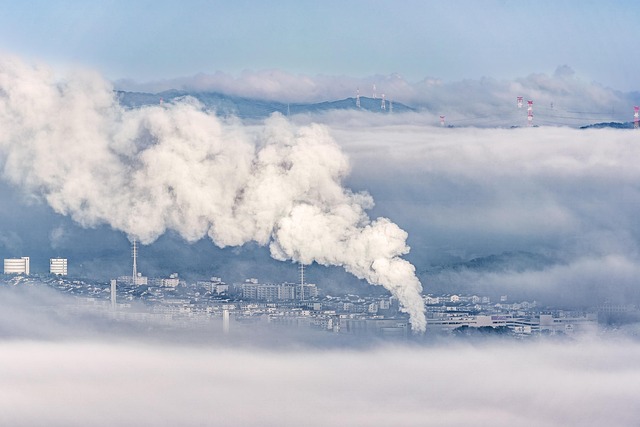1. How Climate Changes Are Triggering Unprecedented Weather Extremes Worldwide
Climate changes are increasingly linked to extreme weather events across the globe. Rising global temperatures have intensified heatwaves, floods, wildfires, and hurricanes, affecting both developed and developing nations. These phenomena are no longer seasonal anomalies they’re becoming regular occurrences with devastating consequences. Scientists agree that climate changes, driven by greenhouse gas emissions and deforestation, are altering atmospheric and oceanic patterns, creating chaotic and dangerous weather conditions. Countries like the USA, India, and Australia are witnessing record-breaking heat, while others like Pakistan and Germany face deadly floods. These shifts not only endanger lives but also strain infrastructure, healthcare, and emergency services.
The growing unpredictability of weather patterns is a direct result of human-induced climate changes. As polar regions warm faster than the rest of the world, the jet stream is destabilized, contributing to longer, more severe weather systems. For instance, prolonged droughts now last for years instead of months, while rainfall in some areas arrives in torrential bursts, overwhelming systems designed for calmer climates. As climate changes continue unchecked, the economic and social costs will escalate. It’s no longer just about hotter summers or colder winters it’s about surviving an increasingly unstable environment. Addressing climate changes today is crucial to preventing even more destructive extremes tomorrow.
2. From Heatwaves to Hurricanes: The Real Impact of Rapid Climate Changes
Rapid climate changes are driving a surge in extreme weather events that are reshaping how we live. Heatwaves are becoming longer and more intense, with some regions experiencing temperatures once thought impossible. At the same time, hurricanes and tropical storms are gaining strength due to warmer ocean waters fueling stronger winds and heavier rainfall. These climate changes are not distant concerns; they’re hitting communities today, damaging homes, disrupting agriculture, and endangering lives. The economic toll is equally staggering, as countries spend billions repairing storm damage and mitigating drought impacts on food supplies.
Moreover, the frequency of such events is rising, creating less time for recovery between disasters. Coastal cities are particularly vulnerable as sea levels rise and hurricanes grow in power, threatening to displace millions in the coming decades. Meanwhile, inland regions are facing water shortages and crop failures due to excessive heat. These changes are pushing ecosystems to the brink and stressing already fragile economies. Understanding and responding to climate changes is essential for building resilience. As extreme weather events become the new norm, governments and communities must adapt infrastructure and disaster response strategies to keep pace with our changing planet.
3. What Global Climate Changes Mean for the Future of Our Planet
Global climate changes pose a significant threat to the future of our planet, impacting everything from ecosystems to economies. As the Earth’s average temperature continues to rise, polar ice melts at alarming rates, sea levels surge, and biodiversity diminishes. These shifts disrupt delicate natural balances, leading to habitat destruction, species extinction, and changes in agricultural zones. For humanity, this means a future where food security is uncertain, coastal regions are submerged, and climate refugees become a global norm. Climate changes are not a far-off concern they are reshaping the very fabric of life on Earth right now.
Looking forward, unchecked climate changes will exacerbate inequality and spark geopolitical tension. Nations that contribute least to carbon emissions often suffer the most from rising sea levels and crop failures. Inaction today will mean a future marked by water wars, economic collapse in vulnerable regions, and a dramatic decline in global health. The longer we delay addressing climate changes, the more irreversible their consequences become. Transitioning to renewable energy, conserving forests, and promoting sustainable lifestyles are no longer optional they’re essential. Humanity’s future depends on our ability to confront climate changes head-on, with urgency, innovation, and cooperation.
4. Is Global Warming Fueling These Sudden Climate Changes?
Yes global warming is a major driver behind the sudden and extreme climate changes we are witnessing worldwide. As greenhouse gases trap more heat in the atmosphere, average global temperatures rise, disrupting established weather patterns. This warming intensifies the water cycle, causing drier droughts and heavier rainfall in quick succession. The Arctic, for example, is warming nearly four times faster than the rest of the planet, weakening the polar vortex and causing cold snaps in normally temperate regions. Such anomalies illustrate how global warming accelerates unpredictable climate changes with far-reaching consequences.
The connection between global warming and climate changes is well-documented by scientists. Rising temperatures warm the oceans, which in turn energize hurricanes and typhoons, making them more destructive. Moreover, warmer air holds more moisture, increasing the likelihood of flash floods and extreme snowfall. These shifts are not part of a natural cycle they are directly tied to human activities like burning fossil fuels and deforestation. Recognizing global warming as the engine of current climate changes is the first step toward effective policy and personal action. Mitigating emissions and enhancing environmental resilience are critical strategies to slow down this dangerous trend.
5. The Science Behind Climate Changes: What’s Really Driving the Chaos
Understanding the science behind climate changes is key to grasping the scale of our environmental crisis. At its core, climate changes are driven by an increase in greenhouse gases like carbon dioxide (CO₂), methane (CH₄), and nitrous oxide (N₂O) in Earth’s atmosphere. These gases trap heat, leading to global warming and disrupting natural climate systems. Human activities such as burning fossil fuels, industrial agriculture, and large-scale deforestation are the main contributors to this imbalance. As temperatures rise, feedback loops like melting ice caps and decreased cloud cover further accelerate the warming process, creating a chaotic shift in global climate behavior.
The Earth’s climate is a delicate system influenced by solar radiation, atmospheric composition, and ocean currents. When any one of these elements is altered, the entire system is thrown off balance. Climate changes are also linked to changes in the jet stream, El Niño and La Niña cycles, and ocean heat absorption. These scientific dynamics are causing erratic rainfall, stronger storms, rising sea levels, and extended droughts. While natural variations in climate have occurred throughout history, today’s changes are faster, more intense, and clearly human-driven. Understanding the scientific root of climate changes empowers people to take action based on facts not fear or misinformation.
6. Urban Heat Islands and Climate Changes: A Dangerous Feedback Loop
Urban heat islands (UHIs) are one of the lesser-known yet alarming consequences of climate changes, especially in growing cities. UHIs occur when concrete, asphalt, and buildings absorb and retain heat, raising temperatures in urban areas significantly higher than surrounding rural regions. As climate changes increase global temperatures, UHIs amplify the effects in densely populated areas, leading to public health risks, higher energy consumption, and poor air quality. This creates a feedback loop hotter cities require more air conditioning, which uses more energy, generating more emissions and further fueling climate changes.
What makes UHIs particularly dangerous is their disproportionate impact on low-income and marginalized communities, who often live in poorly insulated buildings and lack access to cooling systems. Furthermore, cities with limited green spaces and high vehicular traffic see even more severe UHI effects. Climate changes exacerbate these issues by increasing the frequency and duration of heatwaves. Sustainable urban planning is essential incorporating green roofs, reflective building materials, and urban forests can mitigate UHI effects. Addressing UHIs isn’t just about comfort; it’s about adapting cities to climate changes while making them healthier and more livable for everyone.
7. Melting Ice Caps, Rising Seas: Signs of Accelerating Climate Changes
Melting ice caps are one of the most visible and alarming signs of accelerating climate changes. The Arctic and Antarctic are losing ice at an unprecedented rate due to rising global temperatures. As ice sheets melt, they contribute directly to rising sea levels—posing a grave threat to coastal cities and island nations. Satellite data shows that the Greenland and West Antarctic ice sheets are melting faster every year, leading to an increase in flooding, saltwater intrusion into freshwater systems, and the potential displacement of millions. This is not just a regional issue climate changes in the poles are global problems.
The retreat of glaciers and polar ice also reduces the Earth’s albedo effect, which reflects sunlight back into space. With less ice, more heat is absorbed by the planet, accelerating warming and intensifying climate changes further. Rising seas can erode coastlines, destroy habitats, and affect fisheries and tourism industries. In some parts of the world, entire communities are being forced to relocate due to encroaching waters. Climate changes tied to melting ice caps are irreversible in human timeframes, but rapid action can still slow down their worst impacts. International cooperation and emissions reductions are critical to protecting our oceans and coastlines.
8. How Climate Changes Are Disrupting Food Supply and Agriculture
Climate changes are having a profound impact on global agriculture and food supply chains. Irregular weather patterns such as prolonged droughts, unexpected frosts, and intense rainfall are reducing crop yields and increasing food insecurity. Staples like wheat, rice, and corn are vulnerable to temperature shifts, while livestock suffer from heat stress and water shortages. In many regions, farmers are struggling to predict planting and harvesting seasons, resulting in lower productivity and higher prices. Climate changes are threatening not just local agriculture but global food systems that rely on stable growing conditions and predictable climates.
In addition, the spread of pests and plant diseases is intensifying due to warmer temperatures and changing precipitation. Farmers now need to adapt quickly, often without access to advanced technology or financial support. Regions heavily dependent on agriculture like Sub-Saharan Africa and South Asia are particularly at risk, with millions facing malnutrition and economic collapse. To counter these effects, sustainable farming techniques, climate-resilient crops, and smarter water use must be adopted. Climate changes are no longer a distant threat they are reshaping how, when, and what we eat. Proactive solutions are vital to ensuring food security in a rapidly changing world.
9. The Role of Jet Streams and Ocean Currents in Climate Changes
Jet streams and ocean currents play a critical role in regulating Earth’s climate, and disruptions in these systems are a major indicator of ongoing climate changes. Jet streams high-altitude air currents help steer weather systems across the globe. As polar regions warm, the temperature contrast between the equator and the poles weakens, slowing the jet streams. This slowdown causes weather patterns to stagnate, resulting in prolonged heatwaves, cold spells, and storms in one area. These shifts are a direct consequence of climate changes and highlight the interconnected nature of Earth’s atmospheric systems.
Similarly, ocean currents like the Gulf Stream distribute heat and regulate temperatures between continents. Climate changes are affecting the salinity and temperature of oceans, which in turn weakens these currents. A slowdown or collapse of major ocean currents could lead to drastic regional climate shifts turning temperate zones cold and disrupting rainfall patterns vital for agriculture. These invisible forces maintain climate balance, and any disturbance leads to widespread consequences. Scientists warn that if climate changes continue unchecked, we could see a tipping point where jet stream and ocean current behavior is permanently altered, creating long-term instability across ecosystems and societies.
10. Are Human Activities to Blame for Today’s Extreme Climate Changes?
The scientific consensus is clear: human activities are the primary cause of today’s extreme climate changes. The burning of fossil fuels for energy, transportation, and industry releases vast amounts of carbon dioxide and other greenhouse gases into the atmosphere. These emissions trap heat, disrupt the natural carbon cycle, and intensify the greenhouse effect, leading to rapid climate changes. In addition, deforestation, urban expansion, and industrial-scale agriculture are destroying carbon sinks and increasing surface heat, further accelerating environmental damage. Every degree of warming can be traced back to decades of industrial and economic choices.
It’s important to recognize that while natural climate fluctuations have occurred throughout Earth’s history, the speed and intensity of today’s changes are unprecedented. Extreme events like floods, wildfires, and superstorms are more frequent and intense than ever before and the fingerprint of human activity is evident in the data. Climate changes are not an accident of nature; they are the result of unsustainable human behavior. However, this also means we have the power to change the trajectory. Through clean energy, conservation, and policy reform, we can address the human causes of climate changes and create a more stable future.
11. Regional Climate Changes: Why Some Areas Are Suffering More Than Others
While climate changes are a global issue, their effects are not evenly distributed. Some regions suffer disproportionately due to their geography, economy, and climate resilience. For example, low-lying island nations like the Maldives face existential threats from rising sea levels, while Sub-Saharan Africa endures recurring droughts that devastate food production. Even within countries, certain regions like the American Southwest or Pakistan’s Sindh province experience more intense heatwaves and water shortages. These regional climate changes create inequalities that exacerbate poverty, migration, and political instability.
Several factors influence why some areas are more vulnerable than others. Proximity to oceans, reliance on agriculture, infrastructure quality, and disaster preparedness all play roles in determining how climate changes affect a region. Urban centers might face flooding due to poor drainage systems, while mountainous areas could suffer from glacier loss. As global temperatures rise, regional climate models show even more disparity in temperature, rainfall, and storm activity. Addressing climate changes requires tailored solutions that respect local needs and vulnerabilities. Climate justice ensuring that all communities have the resources to adapt is a key element in building a more equitable and sustainable response.
12. Climate Changes Explained: Breaking Down the Global Environmental Shift
Climate changes refer to long-term alterations in temperature, weather patterns, and environmental conditions on Earth mainly caused by human activity since the industrial revolution. This global shift affects every aspect of our natural world, from the air we breathe to the oceans we depend on. As carbon emissions continue to rise, the planet’s atmosphere retains more heat, disrupting weather systems and ecosystems alike. Melting ice caps, rising seas, unpredictable rainfall, and extreme temperatures are all symptoms of this global transformation.
Breaking down climate changes helps people understand how complex but interconnected the crisis really is. It’s not just about warmer weather it’s about collapsing ecosystems, vanishing species, economic loss, and public health risks. Everything from energy production to personal consumption contributes to climate changes, but solutions exist at every level too. Renewable energy, sustainable agriculture, and reforestation are just a few strategies that can help mitigate these changes. Educating people on what climate changes.





Анализ посещения сайтов в Москве стал актуальной темой для многих компаний. С ростом числа интернет-пользователей так же растет и интерес к анализу их поведения. Такой анализ обеспечивает углубленное понимание целевой аудитории.
[url=https://ya.in]Посещения сайтов москве[/url] позволяет получить ценные данные о поведении пользователей и их предпочтениях в интернете.
Важно принимать во внимание разные параметры для эффективного анализа . Место нахождения пользователей, время посещения и тип устройства оказывают влияние на итоги исследования. В итоге, тщательный анализ посещения сайтов в Москве нуждается в многогранном подходе .